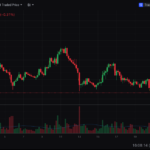Bitcoin’s price has taken a sharp dive, slipping below the psychological $100,000 level over the weekend and finding temporary support around $92,000. The drop comes as global markets react to rising trade tensions between the U.S. and its key trading partners, fueling broader uncertainty and risk aversion.
Failed Momentum Leads to Further Declines
The decline didn’t happen overnight. Bitcoin’s struggles began two weeks ago when it failed to break above $108,000, signaling a lack of strong buying pressure. As a result, the price continued sliding, breaking below $99,000 and eventually hitting a major support zone between $92,000 and $96,000. A brief retracement attempt around the 50-61.8% Fibonacci levels on January 30 was rejected, leading to an accelerated sell-off.
Currently, Bitcoin is showing a modest rebound, up nearly 5% from recent lows, but market sentiment remains fragile as traders watch for the next move.
Trade War Fears Add Pressure
The latest wave of selling isn’t just technical; it’s driven by macroeconomic concerns. The U.S. has imposed new tariffs on Canada, Mexico, and China, escalating fears of a broader trade war. In retaliation, Canada and China have announced countermeasures, further fueling investor uncertainty.
With traditional markets feeling the heat, many traders have begun derisking, pulling out of risk-sensitive assets—including cryptocurrencies. The question now is whether Bitcoin’s current support level will hold or if further downside is in store.
Buy the Dip or Wait for Clarity?
Bitcoin’s drop could be an opportunity for long-term investors looking to accumulate at lower levels, but caution is warranted. If geopolitical tensions escalate further, we could see additional downside pressure. Traders may want to watch for a confirmed trend reversal before making significant moves.
🚨 This article is for informational purposes only and does not constitute financial advice. 🚨







